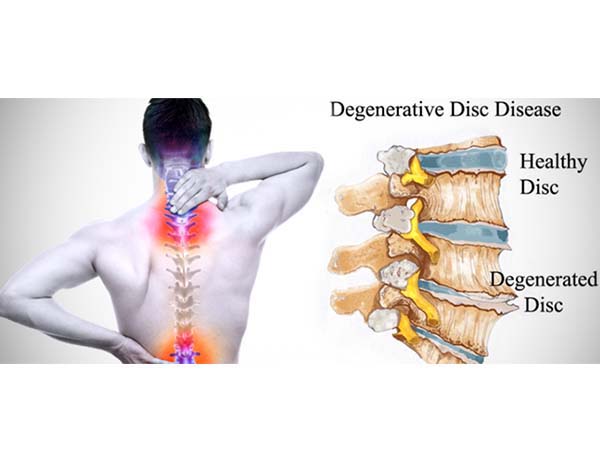
Degenerative Disc Disease
Degenerative disc disease is also commonly known as spondylosis and is the result of an aging spine. The discs are the shock absorbers that sit in between the vertebrae and with age they lose water content and become stiffer. This tends to involve the discs, facet joints and surrounding ligaments. The ligaments tend to become thickened and the vertebrae either side of the discs can develop bony growths or spurs. Disc degeneration does have a genetic pre-disposition and therefore can run in families and can occur at quite an early age and in my practice, I do see this in teenagers. Degenerative disc disease is commonly asymptomatic, ie painless, but some people will develop pain which can result in purely back pain but can be associated with pressure on nerves with subsequent pain and sensory disturbance into the arms or legs.The commonest symptom is that of lower back pain and without nerve irritation, referral can be into the upper part of the thighs. This tends to be associated with some lower back stiffness.
The basic principles of degenerative disc disease are that of loss of shock absorbing cushioning of the disc which then loses water content resulting in stiffness and loss of flexibility of the spine. The discs therefore can bulge and can go through a height reduction with resultant bony spurs appearing. Disc degeneration can result from trauma as well as having a genetic linkage and other factors that can affect it are obesity and smoking. Assessment for disc degeneration involves a history of symptoms as well as an examination to observe the range of movement. A neurological examination will be performed if there is associated nerve symptoms. Further tests may be required including x-rays, CT or MRI scan. An MRI scan helps reveal normal and abnormal discs as well as showing nerve root compression. A CT scan shows bony spurs more accurately and is more useful post-surgery.
Conservative treatments for degenerative disc disease include chiropractic/osteopathic care, physical therapy, pain management and varying injections. If the pain becomes severe and there is evidence of nerve compression, then surgery may be considered. Surgery in this setting aims at addressing the pain source and may involve fusion to control movement as well as surgery to decompress the nerve compression. Options in relation to surgery can involve spinal fusion or disc replacement surgery depending on the location in the spine and the radiological features.
Pease see more information on Degenerative Disc Disease, diagnosis, treatment and post treatment
Possible Treatment Anterior Lumbar Interbody Fusion (ALIF)